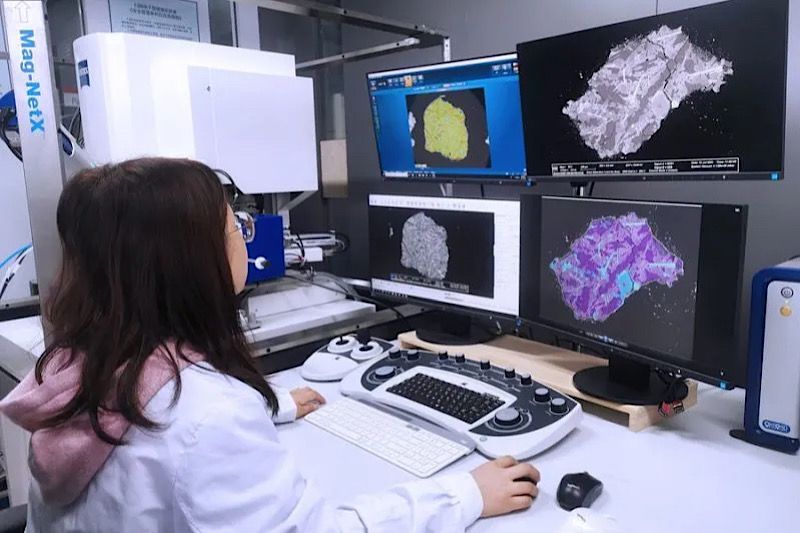BEIJING (ANTARA) – A Chinese team that analyzed lunar rock samples from the Chinese Chang’e-5 mission has discovered a new mechanism for the formation of young volcanoes on the cooling Moon 2 billion years ago.
Scientists previously speculated that radioactive elements or the high water content inside the Moon may have contributed to volcanism in the later stages of the Moon’s life. However, data from Chang’e-5 found that the area of origin of the lunar mantle is dry and contains minimal heat-producing substances.
Research published on Saturday (22/10) in the journal Science advances this suggests that the lowering of the melting point of the mantle caused by volatile and molten components could cause a young lunar volcanism.
Researchers from the Institute of Geology and Geophysics of the Chinese Academy of Sciences (Institute of Geology and Geophysics of the Chinese Academy of Sciences/ IGGCAS) studied 27 basalt clasts from Chang’e-5 to calculate the original constituents of these samples.
They found that the younger magma from the Chang’e-5 source may have higher levels of calcium oxide and titanium dioxide than the magma in older samples brought home from the Apollo missions.
The Chinese spacecraft Chang’e-5 surprisingly revealed young volcanic activity only 2 billion years old, disproving the theory that the Moon was geologically dead following the formation of Apollo samples at least 3 billion years ago.
“The recent melting of the lunar mantle could be due to an increase in temperature or a decrease in the melting point,” said the study’s corresponding author, Chen Yi, who is also a researcher at the IGGCAS.
The team of scientists has proposed the theory that the volatile components added inside the Moon effectively lower the melting point of the mantle and thus trigger the volcanism of the young Moons.
“We found that the Chang’e-5 magma was produced at the same depth, but 80 degrees Celsius colder than the old Apollo magmas,” said Su Bin, lead author of the study and a researcher at IGGCAS.
“This means that the Moon’s mantle underwent a slow and continuous cooling of 80 degrees Celsius from about 3 billion years to 2 billion years ago,” Su said.
According to the researchers. The results of this study provide evidence of a viable mechanism to explain juvenile volcanism on the Moon that is compatible with the recently reported Chang’e-5 samples.
“This research can help planetary scientists better understand the thermal and magmatic evolution of the Moon,” said Chen Yi.


